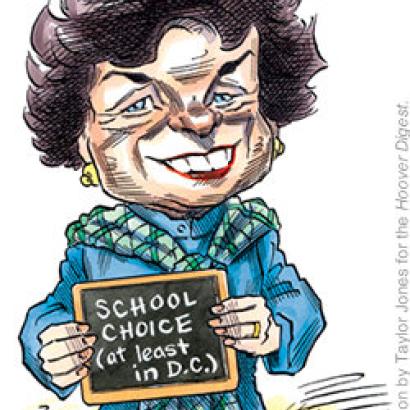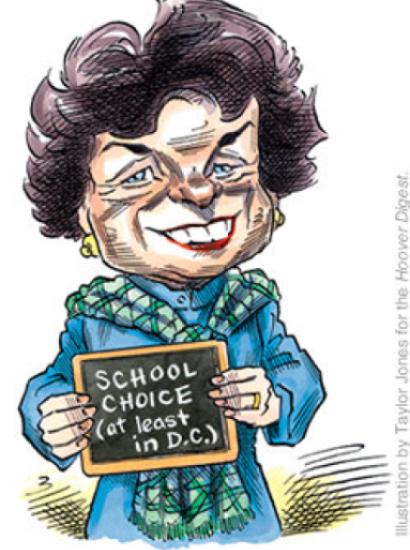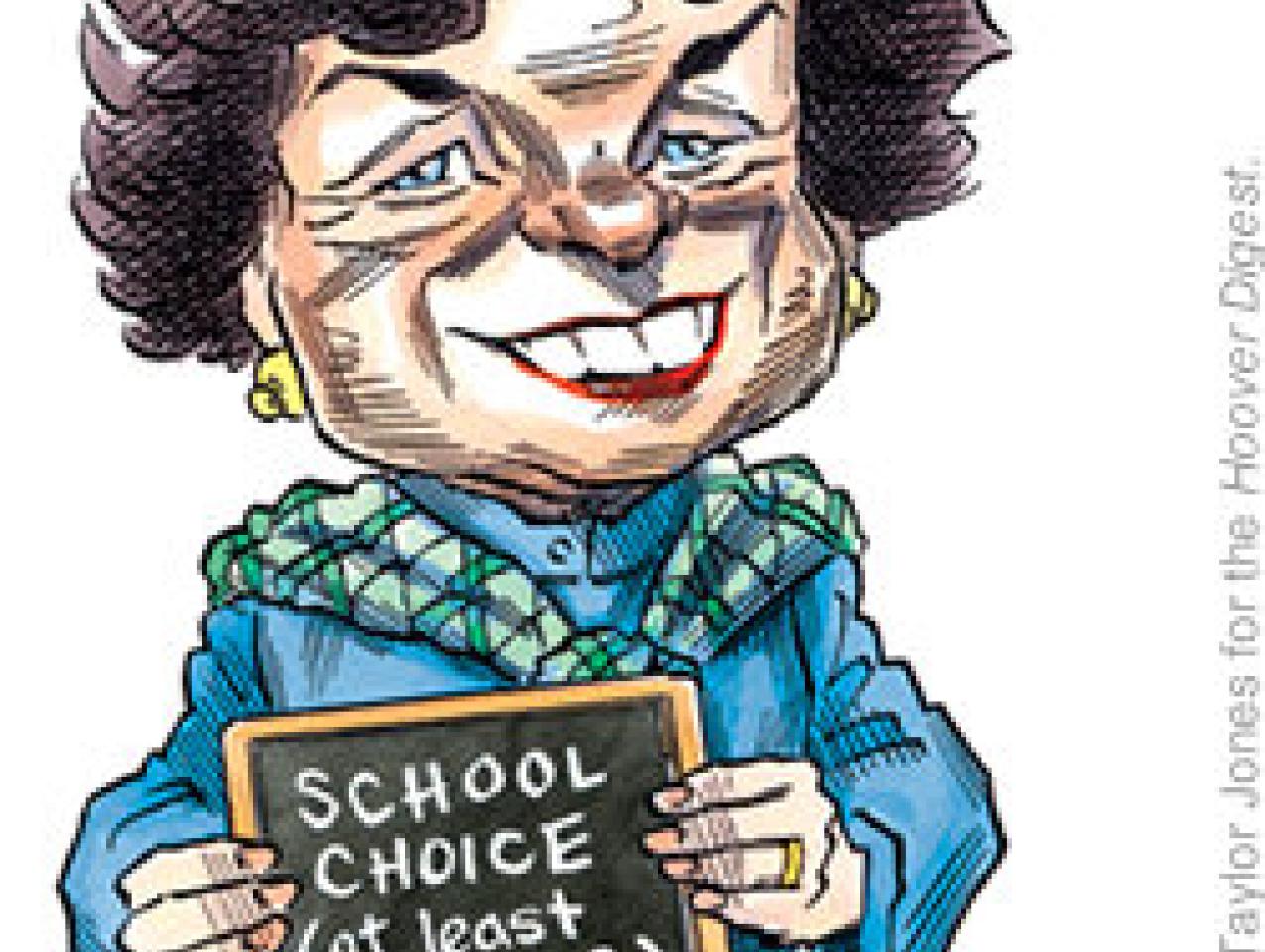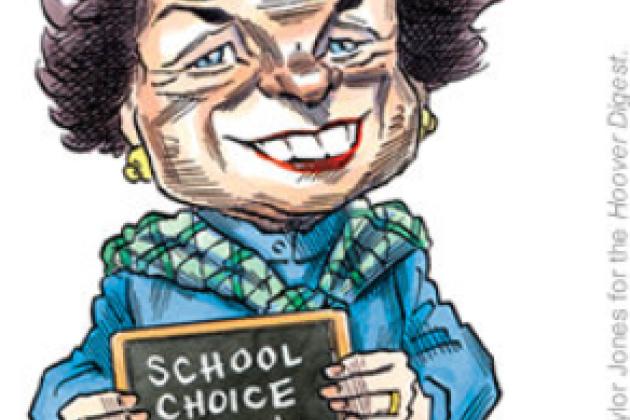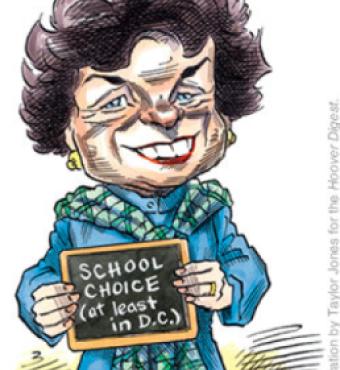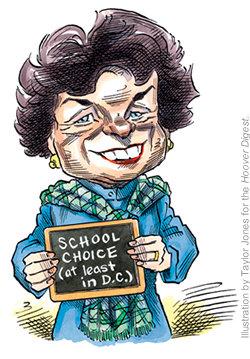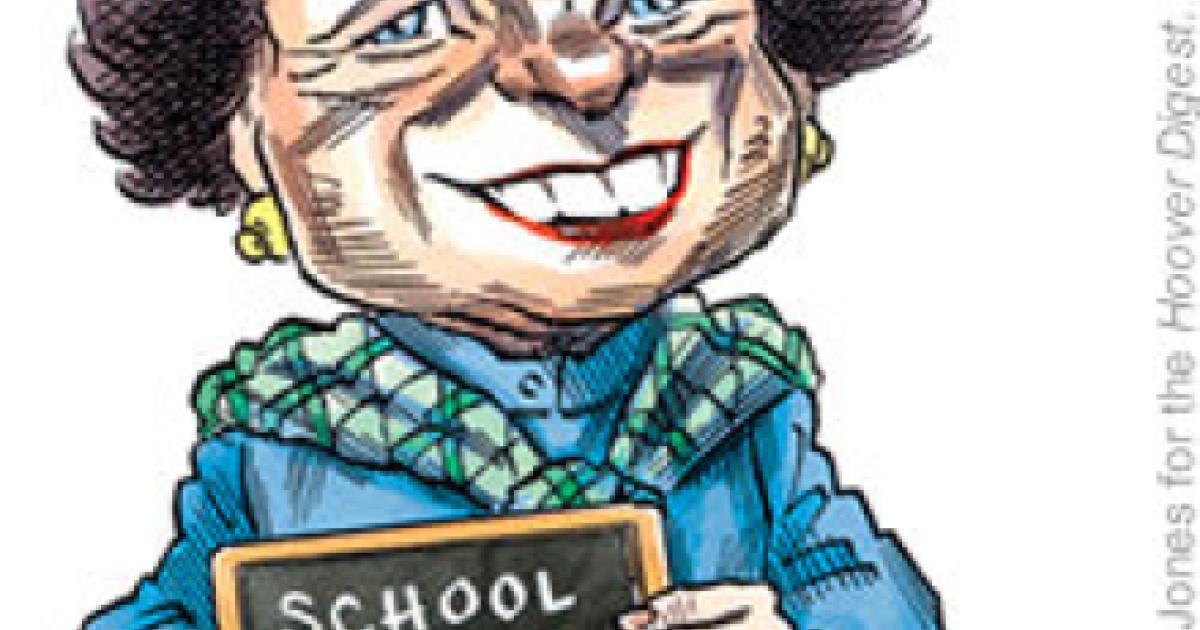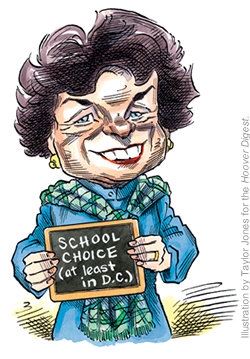
The political world was stunned by Senator Dianne Feinstein’s public embrace of vouchers for students in the District of Columbia. “I have never before supported a voucher program,” the California Democrat explained in the Washington Post. “For 30 years, I have advocated strongly for our public schools. But as a former mayor, I also believe that local leaders should have the opportunity to experiment with programs that they believe are right for their area.”
This reversal of opinion is due to the dismal performance of D.C. students—and the senator’s belief that these students must do better. How important is this change of heart? Perhaps one day it will be considered a seismic event in the history of school reform. But without similar conversions in high places, many students will continue to slip through the cracks.
Feinstein’s about-face comes as we observe the twentieth anniversary of A Nation at Risk, the federal study that warned of a rising tide of mediocrity in our public schools. Even after two decades of efforts to raise academic standards, provide more resources, reduce class size, and hold schools accountable for improving student achievement, our schools continue to fail many children.
By the most objective measure—the federal government’s National Assessment of Educational Progress—reading and math achievement rebounded only slightly from their low points in the early 1980s and remain at low levels. Meanwhile, international comparisons such as the Third International Mathematics and Science Study show U.S. students stuck in the middle or at the bottom of the pack.
Perhaps most troubling, however, are the abysmal achievement and graduation levels of many African American and Latino students. Washington state, which has a highly regarded monitoring system, found that a third or more of minority students in urban schools scored at extremely low levels on crucial tests. More than 54 percent of black urban students fell into the bottom two deciles of white scores.
Dropout rates are no better. One nationwide survey found that, in 1998, white students graduated at a rate of 78 percent; the rates for blacks and Latinos were 56 percent and 54 percent. Seven states graduated fewer than 50 percent of their black students, while eight states graduated fewer than 50 percent of their Latino students. As Feinstein has acknowledged, many school systems cannot meet the challenges set before them. The will is there, but the job is simply too big. D.C. mayor Anthony A. Williams now says choice is the only way to reverse negative trends for his students. He is not alone.
Forty states have authorized charter schools in the past decade, creating 2,700 schools. Several states provide vouchers, and many more may follow in the wake of a 2002 Supreme Court ruling upholding the constitutionality of vouchers for schools with religious affiliations. Private companies now manage 300 public schools; all told, roughly 700,000 students receive their public education outside the traditional system.
The nationwide reforms initiated by A Nation at Risk cannot stem the still-rising tide of mediocrity. Choice has an important role to play, and the sooner we accept that fact the better off our children will be. Ultimately this issue is not about ideology or political correctness. It is about providing a new opportunity for a good education, which is the key to success.








